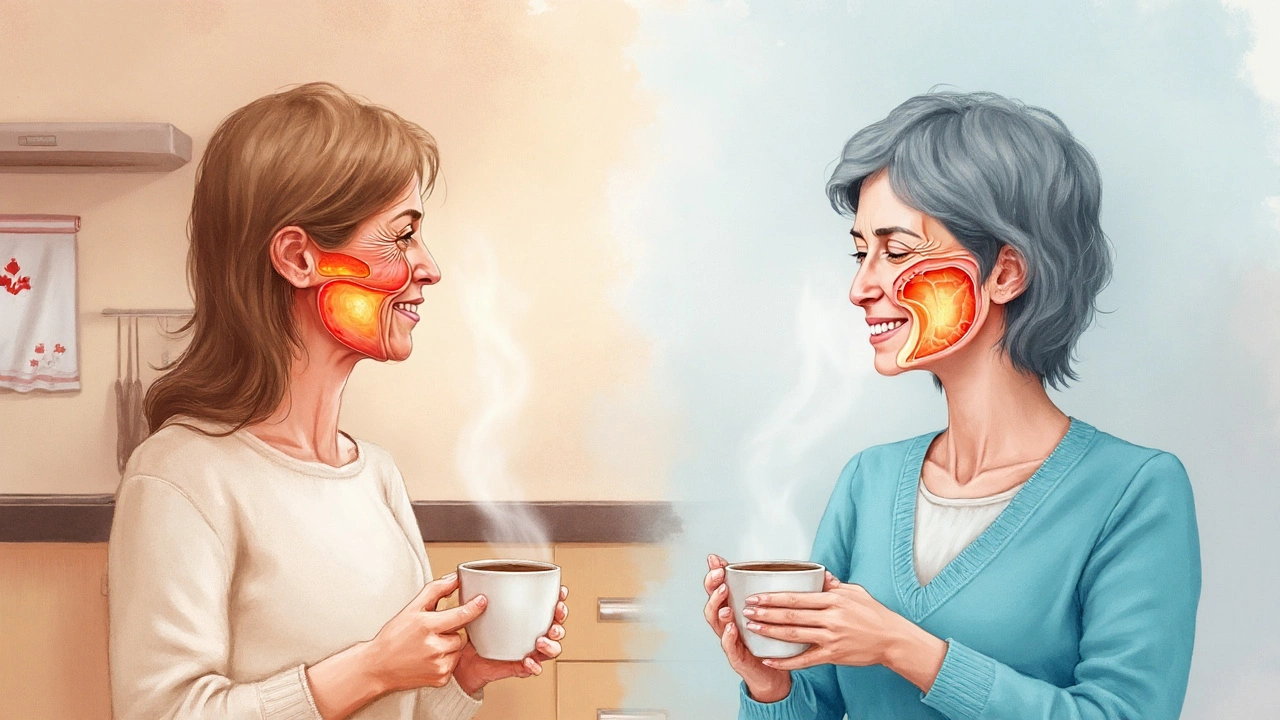Ear‑Sinus Link: Why Your Ears Feel the Impact of a Stuffy Nose
Ever notice a popping sound in your ears when you have a cold? That’s the ear‑sinus link at work. The ears and sinuses share tiny passageways, so anything that clogs the nose can push pressure into the middle ear. When the pressure builds up, you might feel muffled hearing, pain, or even a ringing sound.
The key player here is the Eustachian tube. It runs from the back of the throat to the middle ear and opens when you swallow, yawn, or chew. Its job is to equalize pressure on both sides of the eardrum. If the tube gets blocked by mucus, inflammation, or allergies, pressure can’t escape and you get that uncomfortable feeling.
Common Triggers That Jam the Eustachian Tube
Several everyday things can mess with the tube. A sinus infection fills the nasal passages with thick mucus, which can seep into the tube. Allergies work the same way, swelling the lining and narrowing the opening. Even a sudden change in altitude—like during a flight or a drive up a mountain—forces the tube to work harder to balance pressure.
When the tube stays shut for a while, fluid may collect behind the eardrum. This fluid can become a breeding ground for bacteria, leading to an ear infection. That’s why a lingering cold often turns into a painful ear infection if you don’t clear the blockage.
Practical Ways to Keep the Ear‑Sinus Highway Clear
First, stay hydrated. Water thins mucus, making it easier for the Eustachian tube to open. Warm drinks like tea or broth are especially helpful because the steam loosens congestion.
Second, try nasal irrigation. A saline spray or a neti pot flushes out excess mucus and reduces swelling. Do it once or twice a day when you feel a blockage building.
Third, use gentle pressure techniques. Pinch your nose, close your mouth, and gently blow—this is called the Valsalva maneuver. It forces air into the tube and can pop the pressure back to normal. Do it slowly; a hard blow can damage the eardrum.
Over‑the‑counter decongestants or antihistamines can also shrink the lining of the nasal passages, giving the tube more room to breathe. Check the label for dosage and talk to a pharmacist if you have heart issues or high blood pressure.
If symptoms linger more than a few days, see a doctor. They might prescribe a steroid nasal spray to reduce inflammation or, in rare cases, place tiny tubes in the ear to keep the passage open while it heals.
Finally, protect your ears during altitude changes. Chewing gum, swallowing, or yawning during takeoff and landing helps the Eustachian tube stay active. Some travelers even use filtered earplugs designed to equalize pressure gradually.
Understanding the ear‑sinus link means you can act fast when you feel that clogged‑ear sensation. Simple habits—hydrating, rinsing, and using pressure tricks—keep the connection clear and protect both your hearing and sinus health.
How Ear Canal Infections Trigger Sinus Problems - Causes, Symptoms & Relief
Explore how ear canal infections are linked to sinus problems, why they happen, shared symptoms, and practical steps to prevent and treat both conditions.
